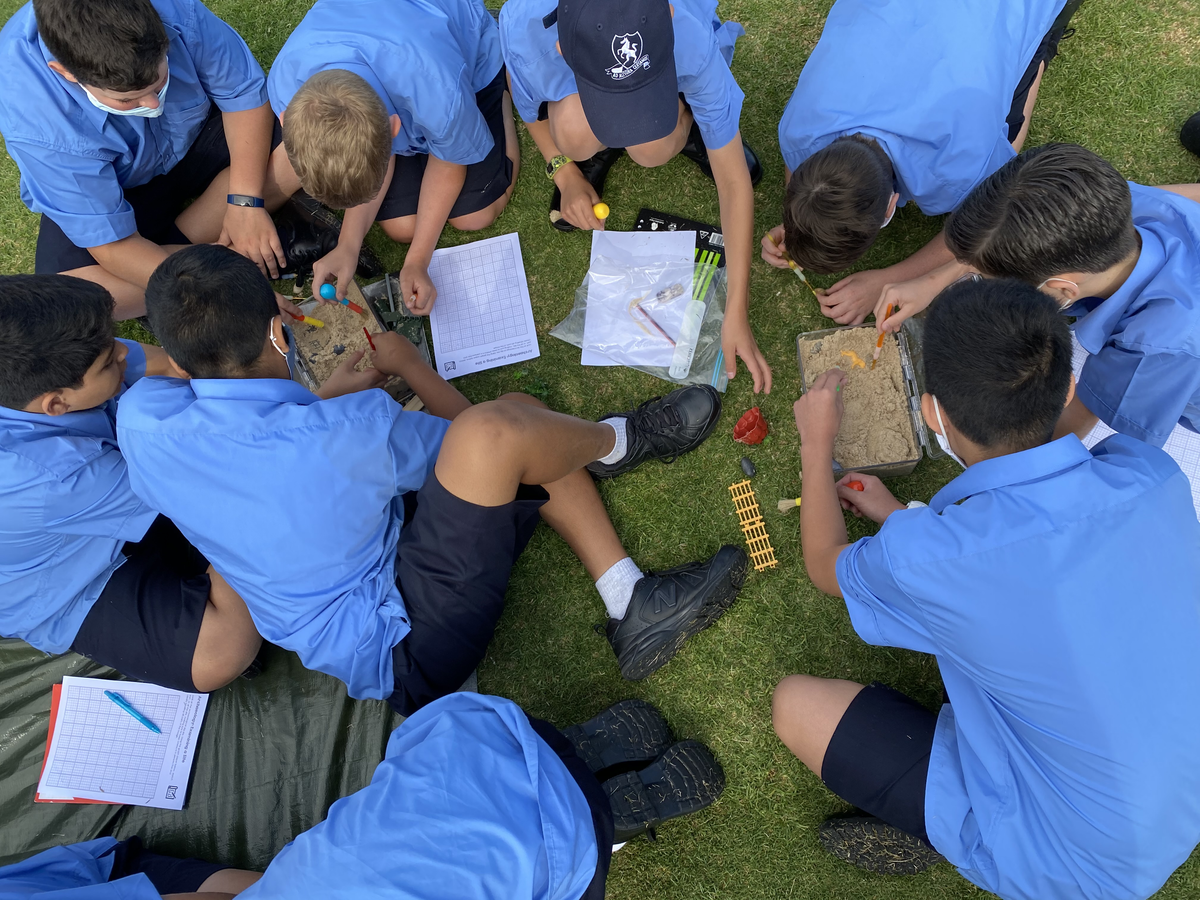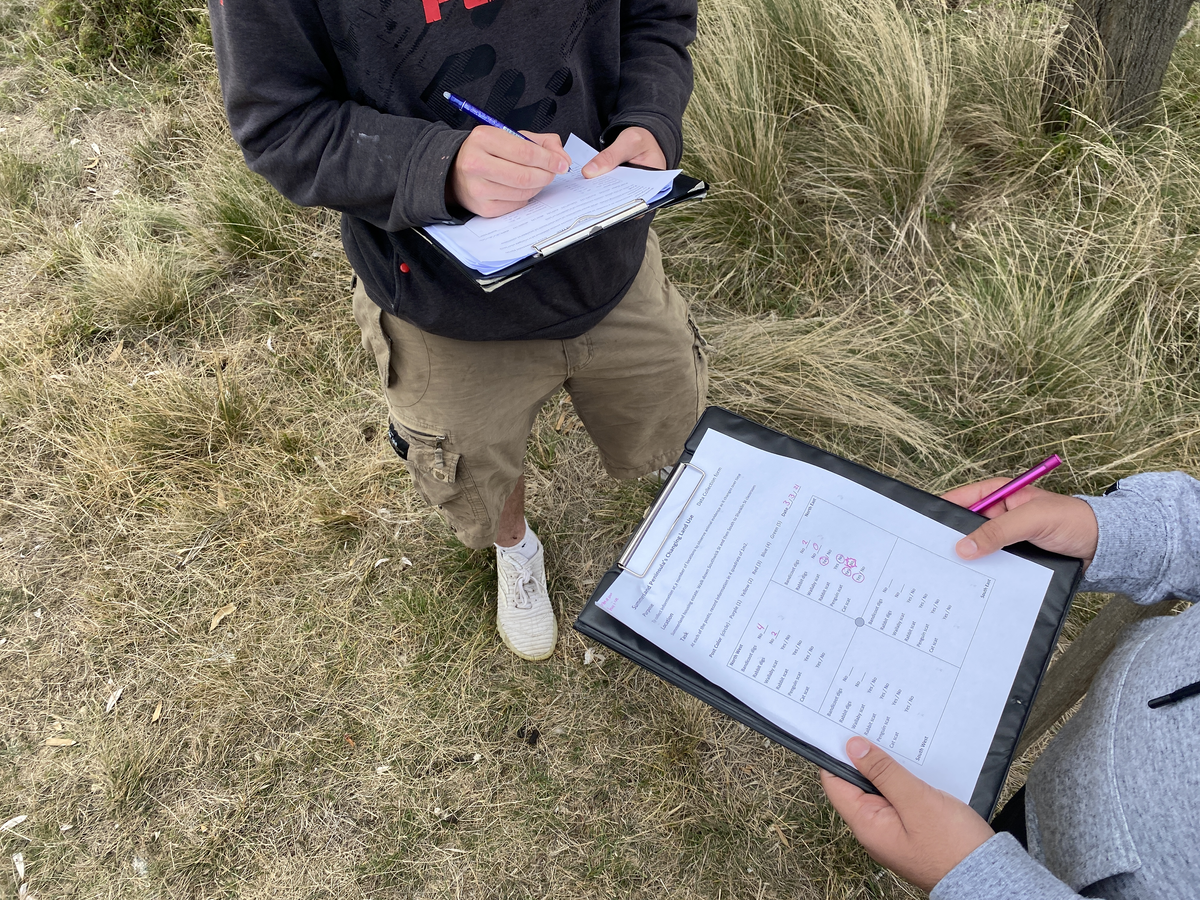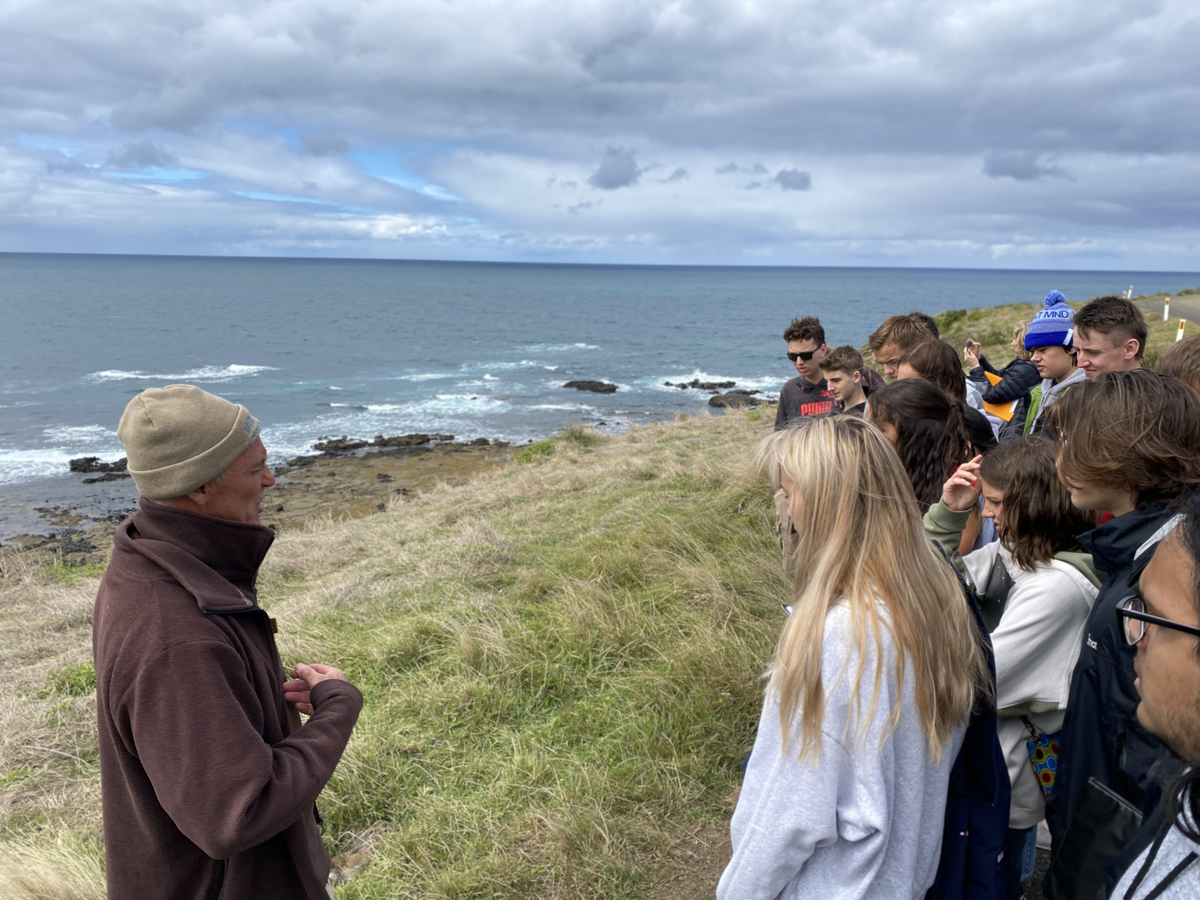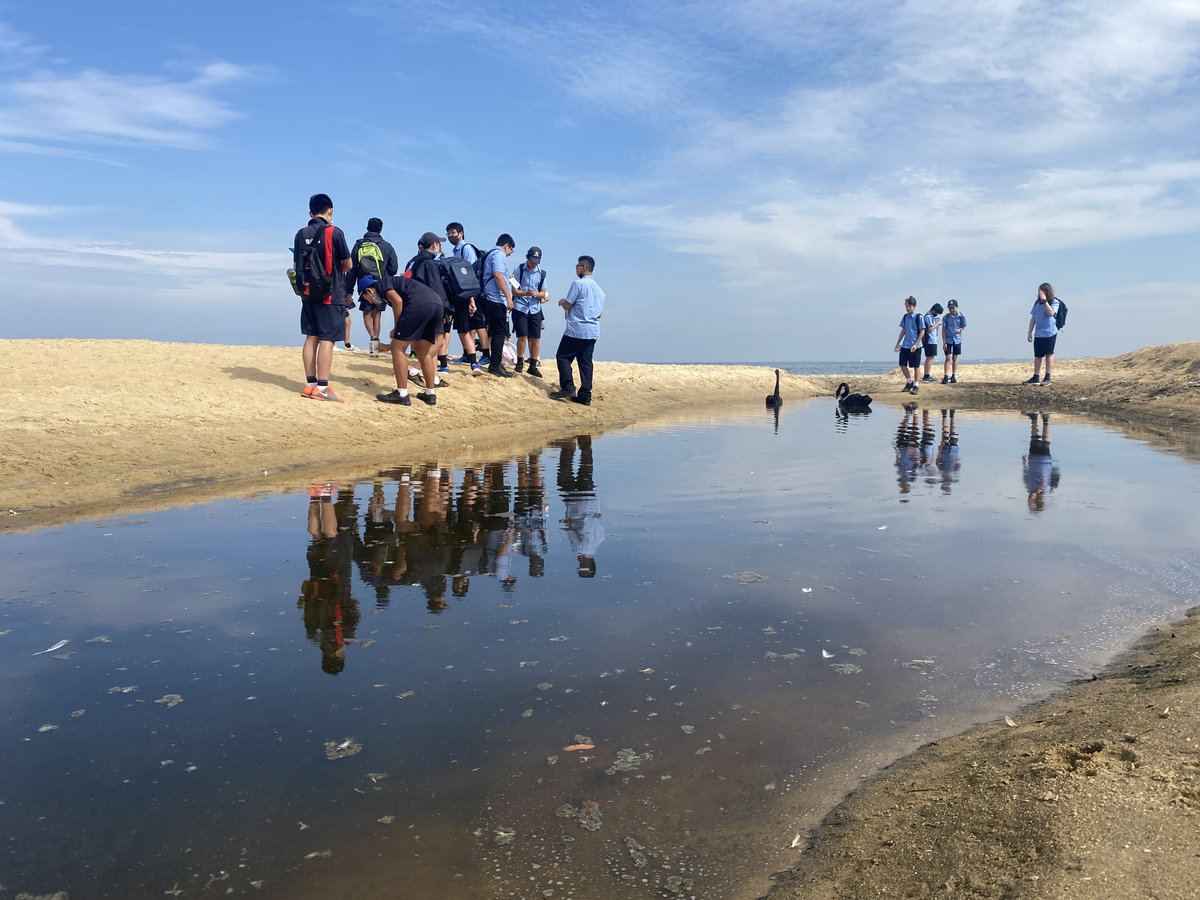Humanities
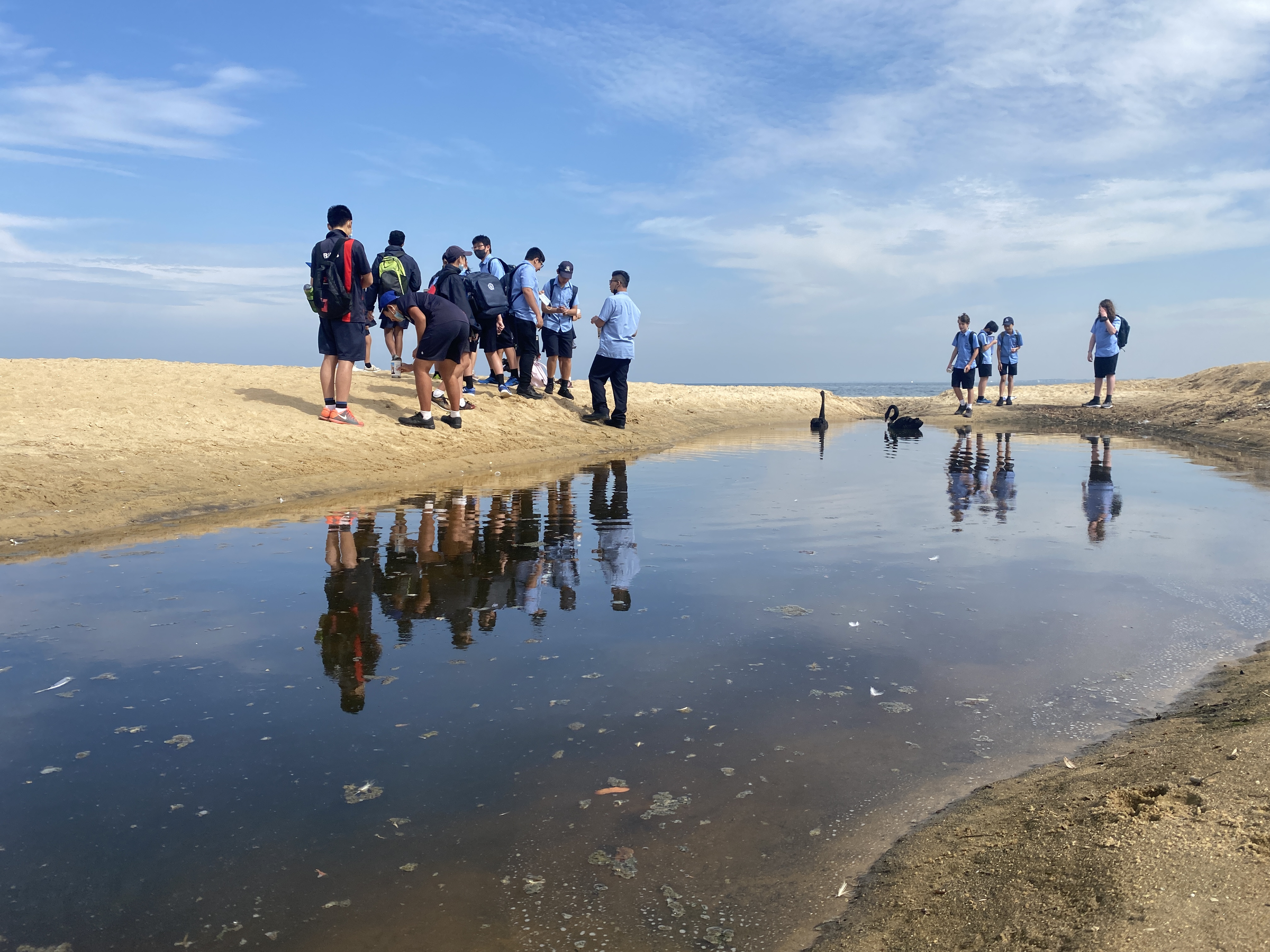
Year 7 History – Stratigraphy
At BHHS, our Year 7 History students have been developing their understanding of historical thinking through learning about Indigenous and Torres Strait Islander peoples and cultures.
As part of this study, they have also been exploring the role of the archaeologist and were given the opportunity to experience some practical elements of this job. Students worked in groups to apply archaeological techniques they had learnt in class, to a scaled-down model of a dig site. It was with great patience that students used brushes to remove each stratigraphic layer to uncover ‘artefacts’ ranging from battle sites to abandoned zoos. And although it was quite messy, it was great to see so many Year 7s engage with this hands-on activity and get involved. With such a fabulous and enthusiastic cohort, we cannot wait to see what else our students will embrace in the History classroom.
Geography Update
Geography students have been busy on a number of fieldwork excursions this term.
Our Year 12 Geography students have ventured to Phillip Island for an overnight camp to investigate land use change near the Penguin Parade. Students observed the movement of penguins across the Summerland Peninsula and conducted research into changes that have occurred in the area to reintroduce native species of animals and plants to the coastal area.
On the topic of coasts, Year 8 students have taken a trip to Brighton and Sandringham Beaches to investigate changes to coastal landscapes. These students created researched how wave patterns effect the coastline and how modifications have been made to keep beaches from disappearing and to support the local community.
Next term we have our Year 10 students taking day trip to Warburton to research deforestation and how regional communities are maintaining the natural environment.
Year 9 students will commence work on their Citizenship Projects and then conduct research into tourism in Belgrave.
We were also excited to see 300 students test their skills in the Australian Geography Competition.
Year 11 Economics
Unit 1 Economics students have been blogging during Term 1 about current economic issues of interest to them. The project aimed to assist them to build their economic literacy so that they can use the language of economics in a knowledgeable and confident manner. The project also aimed to help students appreciate the relevance of Economics in our everyday life! Students engaged with a wide variety of media stimulus materials and blogged about a number of issues including the effect of lost learning from lockdowns on Australia’s future workforce human capital, the effect of border closures on the university sector in Australia and the burden of lack of mental health reform on the economy.
Here is an example from Hannah Lee of 11Y who examined ‘Art through an Economics Lens'
Art is in a grey area between investment and consumption, where the economics behind the market, buyers and artists is uncertain. When there is a freedom of expression through art, and the prestige and power to afford it, there are many risks and benefits involved. Whether art is a long-term trend or only a current hype passing by, the value put into it is questionable.
Just through looking at platforms such as social media, it is evident the plethora of artists in the world; many newly emerging and looking to succeed in the market. However out of those many, analysis shows only 25 leading artists make up US$1.2 billion of the US$2.7 billion in the contemporary art auctions worldwide. This means that lesser known artists find it harder to succeed, with less appeal in purchasing their work. This emphasises the high demand on the elite and the connection between the art market and the idea of relative scarcity. Though art is created continuously, the only art that seems to "matter" is in short supply. High-end works by the "masters" are limited yet widely sought after. Especially in a first class society where the economy is strong and people have the liberty to spend in excessive amounts. In a society where prestige and power are still coveted, the limited resources do not satisfy the unlimited wants.
Smaller artist must analysis their chances in the market, whether it is worth their time and effort. Whether the gains are bigger than the losses. As art can be a time consuming process, individuals must trade-off certain opportunities to compensate. When the market mainly focuses on a small selection of works, artists must decide whether it is worth trying to succeed in the industry.
As the target market of art sales is higher class, the idea of trade offs and opportunity cost is potentially less applicable to them. The people who are purchasing the majority of expensive pieces are comfortable enough where the prices do not make a big impact on their financial status. They are already able to afford other wants and it's rather a choice of what is wanted more. In that retrospect it is less of an investment rather a form of consumption.
On the other hand, purchasing artworks with the intention of receiving future gains, there are many factors put into play. The value of art is uncertain, as it is highly reliant on the state of the economy along with different trends and fashionable movements within society. Additionally, value such as religious reasons can also impact how a piece is appreciated. However, it seems undeniably an investment when pieces such as Leonardo da Vinci's Salvator Mundi are sold for US$450 million after previously bought for US$10,000 around a decade earlier. Nonetheless, it does not seem as practical to "invest" in emerging artists as the appreciation of their work is uncertain, with many risks in how they would do in the long term. What is contemporary and in trend now, may no longer be in a decade. This may be one of the driving factors for why timeless works by artists such as Andy Warhol or Jean-Michael Basquiat make up the largest portion of the market.
Movement in the art market, can be an indicator of the general economy, with the suggestion that people feel stable and secure enough to spend large amounts. As mentioned, only a restricted group of people are able to meet the prices of leading artworks. The more purchases of artworks means more money in the economy, however as much of the target is allocated in developed countries, third world countries are unable to benefit. Export of pieces from the US amounted to 36.4% of artworks at a value of US$9.2 billion. The countries with the highest value of total exports were the US, UK and Hong Kong clearly illustrating how wealthier countries are able to invest in such works. On a world scale, art is not a large movement in the economy, and is highly centred around higher class countries with biased benefits.
Is art something worth being so precious in society? Though the "psychic benefits" and emotional response may be something immeasurable, it hard to say that the art market is beneficial to the overall economy and general public. Though it is something to be admired and loved, art does not necessarily provide the resources for the economy to grow. Meaning sometimes it must be sacrificed for the sake of a country.
- Hannah Lee, 11Y
- Chloe Steele,
Domain Leader, Humanities


